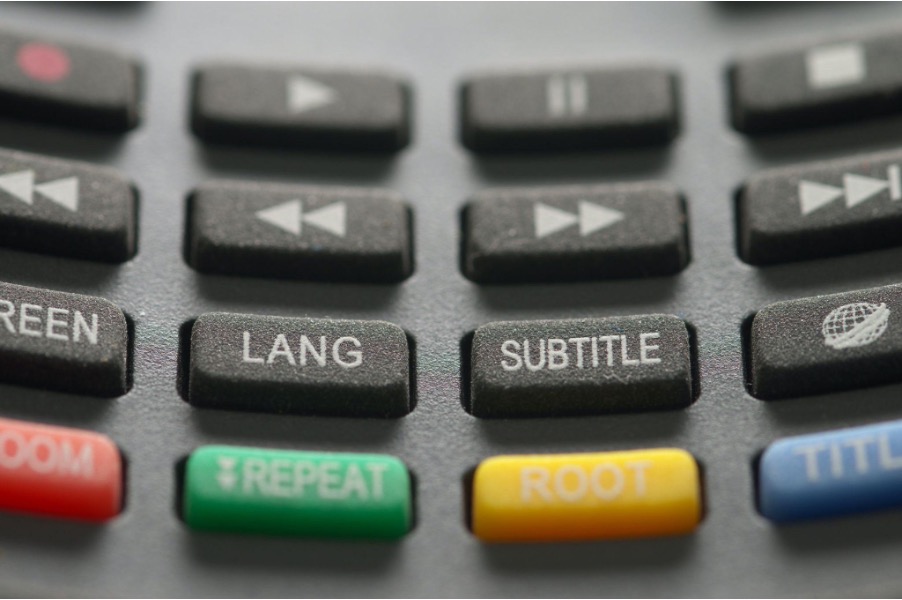- Resource Center
- Professional Development
- Articles & Videos
- Why Do I Need to Be a Professional to Translate Audiovisual Content?
1 November 2022
| by Universidad Nacional de Córdoba Facultad de Lenguas
Why Do I Need to Be a Professional to Translate Audiovisual Content?

Sign up for our newsletter on globalization and localization matters.
Have you ever watched a movie and found it difficult to read the subtitles? Have you ever felt you were missing jokes or cross-cultural references when watching a subtitled TV series? Have you ever read a subtitle that “sounded unnatural”?
It’s usually taken for granted that just being bilingual is enough to translate. That’s why the skills and qualifications required for this job are often underestimated. As Argentinian English-Spanish Translation students and media content localization enthusiasts, we want to shed a light on the role of professional linguists in audiovisual translation.
1. Cross-cultural communication skills
Let us begin by pointing out one of the most important aspects of translation and subtitling: cross-cultural communication skills. We will give you an example: Let's suppose you translate a stand-up video for a digital platform. There are many comedians that make jokes in reference to a politician in their country. So, when translating that particular joke, the subtitler needs to consider the target culture since the target audience might not grasp the reference. Think about a politician in your country that has been given a nickname. Maybe, it has to do with a situation only people from your country know, so we, as professional linguists, have another challenge: having the skills to use the resources available to find key information to give a faithful rendering that adapts to the target culture.
Let’s take the famous phrase “I’m not a crook” by President Richard Nixon. Before translating, we have to look for background information that would help us understand the context in which this phrase was said and we have to understand what “being a crook” means. After searching for information, we will be able to provide an accurate translation that will keep the intended meaning and at the same time will adapt to the target culture. As Argentinian translators-to-be, we could choose two options when translating: “No soy un delincuente” would be the “neutralized” rendering for all Spanish speakers, whereas if we adapt it to our culture, we would go for “No soy un chorro”.
2. Being an audiovisual translation expert
a. Technical challenges
But cross-cultural knowledge is not enough. As subtitlers, we have to complement it with technical knowledge. There are plenty of courses and specializations related to subtitling but still many people believe that it is just about knowing more than one language. We will show you how important technical knowledge is; for example, do you know how segmentation works? A line can’t end with a preposition, for instance. Probably many of you have seen subtitles that appeared on screen when the character hasn’t talked yet. That’s because the subtitler didn’t adjust the subtitles correctly, and that confuses viewers. It makes them lose concentration and maybe they lose track of the plot. What about the location of the subtitles? It’s not just about typing the words in the other language and placing them on the video. Sometimes there are subtitles that overlap with another text (a sign, for example) and it becomes impossible to read both. The example below clearly illustrates how this operates in practice:

b. Bilingualism is not enough
Have you ever wondered why there are many translation mistakes in the subtitles of famous TV series or hit movies? Well, let us tell you that there are many digital platforms that allow people who know more than one language and who are movie buffs to subtitle films or TV series by just passing a 30-minute test. Has it ever been difficult for you to get a joke or an idiom when watching your favorite sitcom? As professional linguists-to-be, we believe that keeping a pun or an idiomatic expression in the TL may be one of the most difficult challenges a translator can face because apart from having to adapt it to the target culture, the words in the source language may not have a translation that is meaningful or even fun in the other tongue. So, making a literal translation will most probably result in meaningless wording for the audience. Let us give you an example: in English when someone says “She’s kicked the bucket”, it means that she’s dead. So, what would happen if we made a literal translation (“Pateó el balde”)? It wouldn’t make sense to any Spanish speaker. Two expressions that would perfectly suit this context, at least for an Argentinian Spanish speaker, would be: “Pasó a mejor vida”, “Está tocando el arpa”.
3. Conclusion
Having said this, we believe there’s still a lot to learn about the role of a professional linguist in audiovisual translation. By bringing up this topic, we invite you to think about what we’ve discussed and share our article with your friends and family to make more people aware of how important the role of an audiovisual translator is.
Do you want to contribute with an article, a blog post or a webinar?
We’re always on the lookout for informative, useful and well-researched content relative to our industry.




